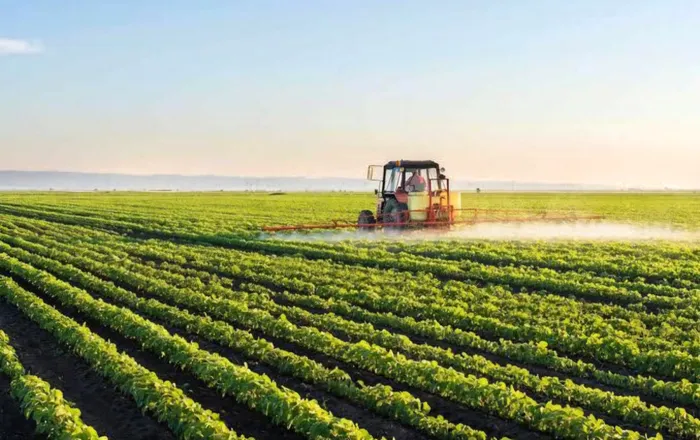Agricultural sector boosts South Africa's GDP growth amidst economic uncertainty

Even though South Africa’s economic growth slumped to 0.1% in the first quarter of the year, following a mere revised 0.4% gain in gross domestic product in the last quarter of 2024, economists said that the figure surprised to the upside.
Image: File.
Even though South Africa’s economic growth slumped to 0.1% in the first quarter of the year, following a mere revised 0.4% gain in gross domestic product in the last quarter of 2024, economists said that the figure surprised to the upside.
However, several economists have indicated that there is a downside risk to growth for this year.
Commenting on Statistics South Africa figures released on Tuesday, Dr Elna Moolman, Standard Bank Group Head of South Africa Macroeconomic Research, said that the number “marginally” surprised to the upside. She attributed this to a “very strong performance in the agricultural sector”.
“This is a relief but at the same time it doesn't entirely remove our concerns around downside risks to this year's growth. Of course, the first quarter was characterised by exceedingly high uncertainty stemming from both global and domestic factors and we are expecting some improvement in growth over the course of this year,” Moolman said.
Investec economist, Lara Hodes, noted that the figure was slightly above Bloomberg’s consensus. “The outcome is reflective of a highly subdued economy, which continues to face a number of challenges, with business confidence weak, weighing on investment potential,” she added.
Concurring that the GDP numbers were “a touch better than feared,” was Old Mutual chief economist, Johann Els. He said he had expected a contraction of 0.1%.
“Be that as it may, it's still a very weak number, mostly due to significant weakness in mining, manufacturing production in the first quarter. And as a result of those, electricity production was also pretty weak,” Els said.
Manufacturing declined 2% as a sector, while the mining and quarrying industry decreased by 4.1%, with the largest negative contributors being the platinum group metals industry.
Both manufacturing and mining are key economic growth drivers, with manufacturing accounting for almost 13% of GDP in 2023, and mining worth 6% of economic activity in the same year.
Outside the agricultural sector, Moolman noted that the “economy was generally quite weak with more than half of the economic sectors contracting relative to the previous quarter”. Els added that the growth in agricultural was a “positive surprise versus my expectation,” given that it is a volatile sector.
Dr Azar Jammine, director and chief economist at Econometrix, stated that the figures, were not as bad as expected, while adding that the industrial sector “really appalling”. He explained that “deindustrialisation is just carrying on regardless”.
Hodes added that expectations for GDP growth this year have eased. “The extent of the effect of global trade policies on investment and growth remain uncertain,” she said. She also said that hastened implementation of key reforms is imperative to boost confidence and accordingly growth.
The South African Reserve Bank recently forecast growth to come in at 1.2% this year, rising to 1.8% by 2027. Jammine said that this forecast was “still too high”.
With a contrasting view, Els said he still expects 1.4% growth for the full calendar year. “And we should see growth better this year than last year, even though overall it's still pretty weak.”
Statistics South Africa has yet to release 2024 figures.
Thanda Sithole, FNB Senior Economist, said the “data release is consistent with our 1.3% growth forecast for 2025”.
The fact that fixed investment contracted in the first quarter of this year, with private sector fixed investment being the weakest since 2021, was a “concern in terms of expanding capacity and expanding employment in the economy in due course,” said Moolman.
A slowdown in private sector fixed investment growth was a “big negative surprise,” said Els. He explained that most of that came from negative growth in residential buildings, construction works, transport equipment and machinery.
“And that's the area where we need to fix policy fixed confidence so that the private sector can start to invest,” said Els.
Jammine noted that a slowdown in fixed investment was starting to spill over into services such as hairdressers, given that a lack of construction activity would result in jobs losses.
“Residential building, civil engineering, transport equipment, machinery and equipment all declined yet again. How people can hope for an improvement in sustainable growth of the economy under such circumstances, I don't know,” he said.
IOL
Related Topics: